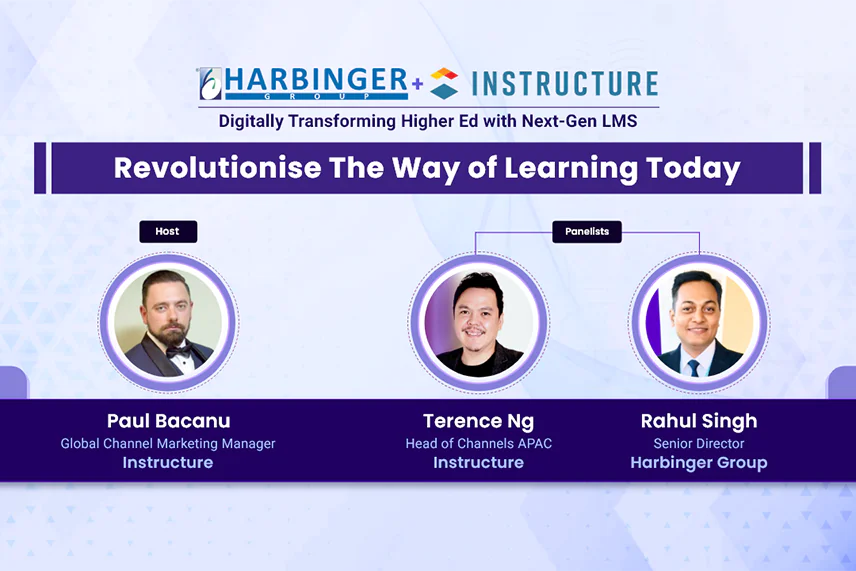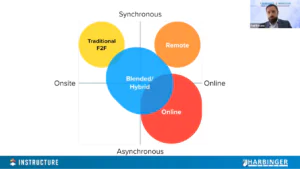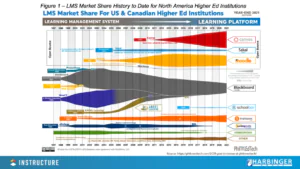
A Learning Management System (LMS) isn’t a luxury today; it’s an absolute necessity. COVID-19 has changed the way we look at education. Gone were the days when teachers and educators expected learners to attend the classroom and accept the traditional way of learning. Without any second thought, post-covid, we have witnessed an immense paradigm shift in the learning sector.
Digital transformation in the education industry has remarkably created a hybrid learning ecosystem. Consequently, students are being prepared for future workplaces, and the productivity of the faculties has also been enhanced by lessening their burden of mundane tasks.
Moreover, we must recognize how used the generation to the usage of smartphones and other gadgets. Early exposure to such devices has cultivated a sense of comfort in them. It is wiser to use this comfort and familiarity and mix it with the learning patterns. The style of consuming content is changing, and the internet is taking over traditional learning patterns. Content, knowledge, and information are just one click away, then why will learners choose classrooms? Students with full-time smartphones and other gadget access will only be comfortable and productive in traditional classrooms. And, thus considering this massive change of mindset, institutions must develop different strategies aptly suited to students.

In our recent Power Hour: Revolutionize the Way of Learning Today, industry experts from pioneering companies discussed the absolute need for a learning revolution in today’s world. Furthermore, the discussion sheds light on how we can amplify the power of teaching and learning using digitization and technology. The insightful webinar, hosted by Paul Bacanu, Global Channel Marketing Manager, Instructure, featured Terence Ng, Head of Channels, APAC – Instructure, and Rahul Singh, Senior Director EdTech, Harbinger Group.
Digital Transformation and Smart Adoption of Digital Devices
It’s not a big surprise if today’s generation is born with mobile phones in their hands. In one of the researches, Statista concluded the increase of usage of smartphones in India from 600K in 2010 to over 1.5 BN by 2040. Digital transformation revolutionizes teaching and learning patterns, and style has become undeniably important.
In addition to that, context drives the device choice. Today consumers own multiple devices and move seamlessly between them throughout the day. The usage of digital devices plays a significant role here, and people are becoming increasingly comfortable using these devices and expect intuitive user experiences. That’s where education must catch up with the adoption of digital devices and accordingly strategize the learning courses.
As per Google’s The New Multi-Screen World Report, the device we choose to use at a particular time is often driven by our context:
- The amount of time we have or need
- The goal we want to accomplish
- Our location
- Our attitude and state of mind
With the help of such contextualization, we can use technology more accurately to make a massive play from teaching and learning perspectives.

Online Education Offers More Equitable and Democratic Learning Experience
“…students perceive online discussion as more equitable and more democratic than traditional classroom discussions…”
- Kim et al. (2011)
Students should have the freedom of learning that offers democratic encouragement for building their learning patterns and styles. The education space must consider equity essential while implementing online education for all learners. Moreover, online education allows shy, under-confident, and introverted students to express themselves freely, share thoughts and ask questions, and participate in discussions more actively compared to a classroom setup environment.
Furthermore, the metaverse situation in online hybrid learning solutions, augmented reality, and virtual reality provides learners with immersive, intuitive, and informative learning experiences. For example, if teachers want to explain the molecular reaction to their students, the best way would be to show it with the help of holograms and virtual reality.
“The change to remote learning offered faculty and technology support people the conversations that they wanted to have for a long time…”
- Dr. Terri Cullen, University of Oklahoma
It’s about if; it’s about when. There’s nothing to deny about the hybrid or remote learning model. The change has come. But now it depends on how soon universities willingly and actively integrate technology.
The readiness to adopt technology supported by higher education and institutions will genuinely decide learners’ future. 95% of adults expect a hybrid model for their higher education by 2025. From the below image, we can understand better the prominence of blended and hybrid learning models.

The Cloud Decision: Canvas LMS and its Add-On Universe
Canvas is a product that offers learning management systems, analytics, and other education solutions within the platform. It allows the vast community support of millions of users worldwide to leverage equitable access and elevate learning and teaching experiences.
Here are some of the benefits SaaS-based cloud solutions have to offer from an EdTech perspective:
- Cost-effective
- Time management
- Scalability and Accessibility
- Deals with compatibility issues
- Offers guaranteed service
- Ensures security
- Provides high adaptability
- Enables free trials

You can refer to the above image and observe how Canvas has come a long way and eventually grew to enhance the education ecosystem. Moreover, the first adopters of online education who resisted the cloud-native solutions eventually disappeared or needed to offer satisfactory learning experiences. But nowadays, it’s an entirely different story. The continuous improvement in technology support and proposing innovative ideas for elevating experiences is crucial.
A Final Word
One critical aspect of education is connecting the dots between education and employment. And that’s where digital transformation plays a significant role. In the current situation, every industry has a skill shortage, while on the other hand, multiple graduates and postgraduates are coming out of the education system looking for jobs. We can observe some portions missing there, of which one could be: are we listening to the needs of the job market?
One aspect to look at from additional transformation perspectives is whether the job market data can be fed into the education system. Later the system can investigate incorporating some of the requirements in their ecosystem and help the students become job ready. Thus, today’s digital transformation and learning revolution is not just about one application or platform; it’s building a sustainable education ecosystem that connects the dots between education and employment.
Are you looking for a helping hand to guide you with EdTech solutions? Feel free to contact us today at contact@harbingergroup.com.





